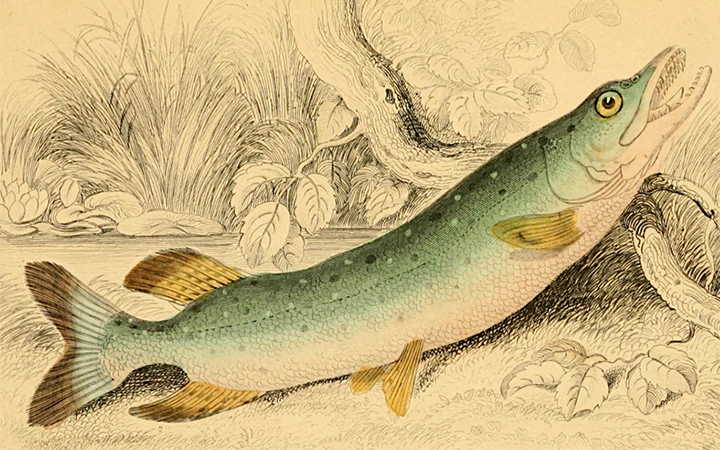The northern pike (Esox lucius), known simply as a pike in Britain, Ireland, most of Canada, and most parts of the USA, (also called jackfish or simply “northern” in the Upper Midwest of the USA and inManitoba, Canada), is a species of carnivorous fish of the genus Esox (the pikes). They are typical ofbrackish and fresh waters of the Northern Hemisphere (i.e. holarctic in distribution). Pike grow to a relatively large size: the average length is about 70–120 cm (28–47 in). Even so, lengths of up to 150 cm (59 in) and weights of 25 kg (55 lb) are very rare. The heaviest specimen known so far was caught in 1983 at an abandoned stone quarry in Germany, where the species is called Hecht. This specimen was 147 cm (58 in) long and weighed 31 kg (68 lb). The longest pike ever recorded and confirmed was 152 cm (60 in) long and weighed 28 kg (62 lb). A pike of 60.5 in (154 cm) was caught and released in May 2004 in Apisko Lake, Manitoba. Historic reports of giant pike, caught in nets inIreland in the late 19th century, of 41–42 kg (90–93 lb) with a length of 173–175 cm (67–68 in), were researched by Fred Buller and published in The Domesday Book of Mammoth Pike. Neither Britain nor Ireland has managed to produce much in the way of giant pike in the last 50 years, so substantial doubt exists surrounding those earlier claims. Currently, the IGFA recognizes a 25 kg (55 lb) pike caught by Lothar Louis in Lake of Greffern, Germany, on 16 October 1986, as the all-tackle world-record northern pike.
(From Wikipedia, March 2015)




